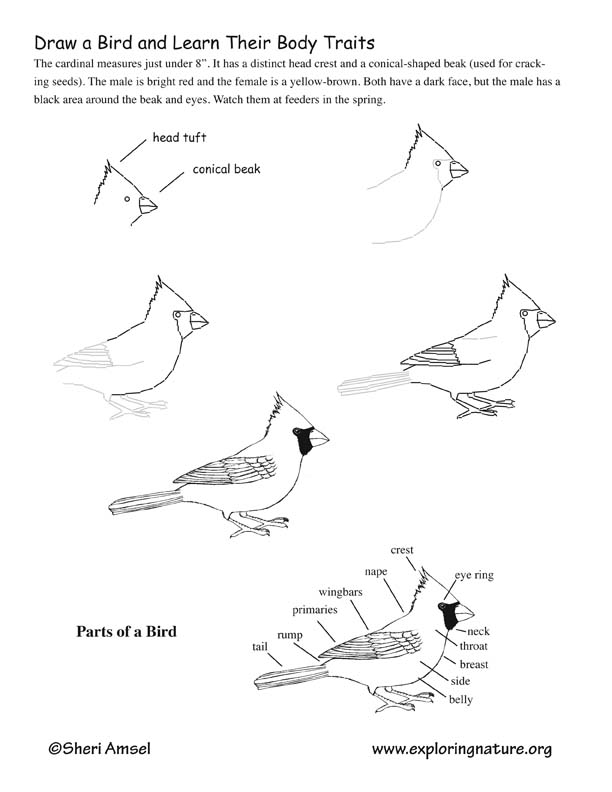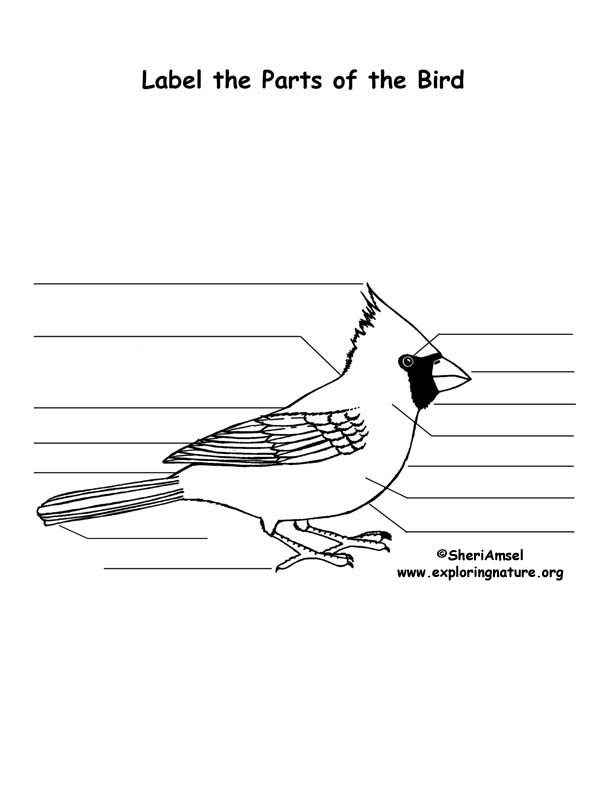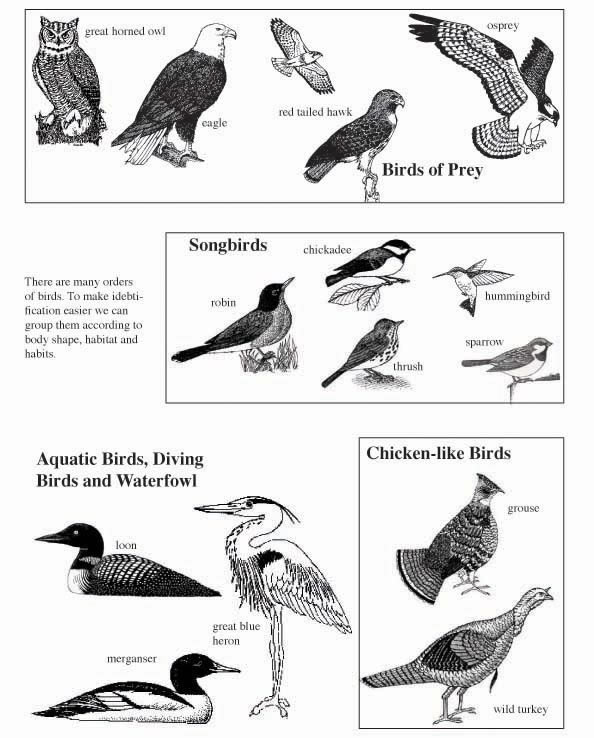Age: 4th - 7th grade
Objectives: After hearing this talk, drawing a typical bird and filling out the bird traits sheet, students will be more familiar with bird traits. To save paper, teachers can lead students on the drawing activity. Use the drawing guide to do a step by step lesson on the board for the whole class to copy. Then label the parts. Then they can study their hand-drawn bird chart and take the labeling quiz to see what they learned. Later, have students look at the common bird sheet and identify some local birds and how the birds in the same group have traits in common.
Teaching Points:
Birds come in all shapes and sizes but they all have certain traits in common.
- They have feathers instead of hair or fur. They are the only animal group that has feathers.
- They have beaks or bills and no teeth.
- They have two feet and two wings.
- They are warmblooded.
- They do not have live young like mammals, but lay eggs.
- Most birds take care of their young, feeding them until they are old enough to find their own food.
- Most birds build some kind of nest.
- Birds have good eye sight and can see colors.
- Most birds can fly. They have hollow bones to make their skeleton lighter for flight. They have large developed chest muscles for flight.
- Birds can survive cold temperatures because they have an underlying layer of down feathers that act as thermal insulation, like wearing a down jacket!
- Male birds are often (but not always) much more brightly colored than females who can be dull colored to blend in (camouflage) while nesting. This is called sexual dimorphism.
- Bird diets vary - some birds eat meat (rodents, fish, other birds or carrion), some are seed eaters and some eat plants.
- Many birds migrate to a cooler climate for reproducing and summer feeding, and then return to a warmer climate for the winter.
- Birds sing to attract a mate or mark a territory.
- Not all birds can fly! Flightless birds include ostrich, emu, rhea, cassowary, kiwi, penquins, and others.
Flightless Bird Traits:
- They all nest on the ground.
- They have developed other ways of defending themselves from predators. Some are fast runners. Some are fast swimmers. Some can kick! Some live on Islands where there are no predators, so they don’t need to fly.
Can you name one famous flightless bird that became extinct because predators invaded the islands where they lived? Look for the flightless bird sheet and name the birds from around the world that cannot fly.
Using the sheets below, draw a bird, learn its physical traits, take the bird parts quiz.
Then look at the bird group sheet below. Can you see what makes the birds in each group alike? Can you see how one group differs from another?





